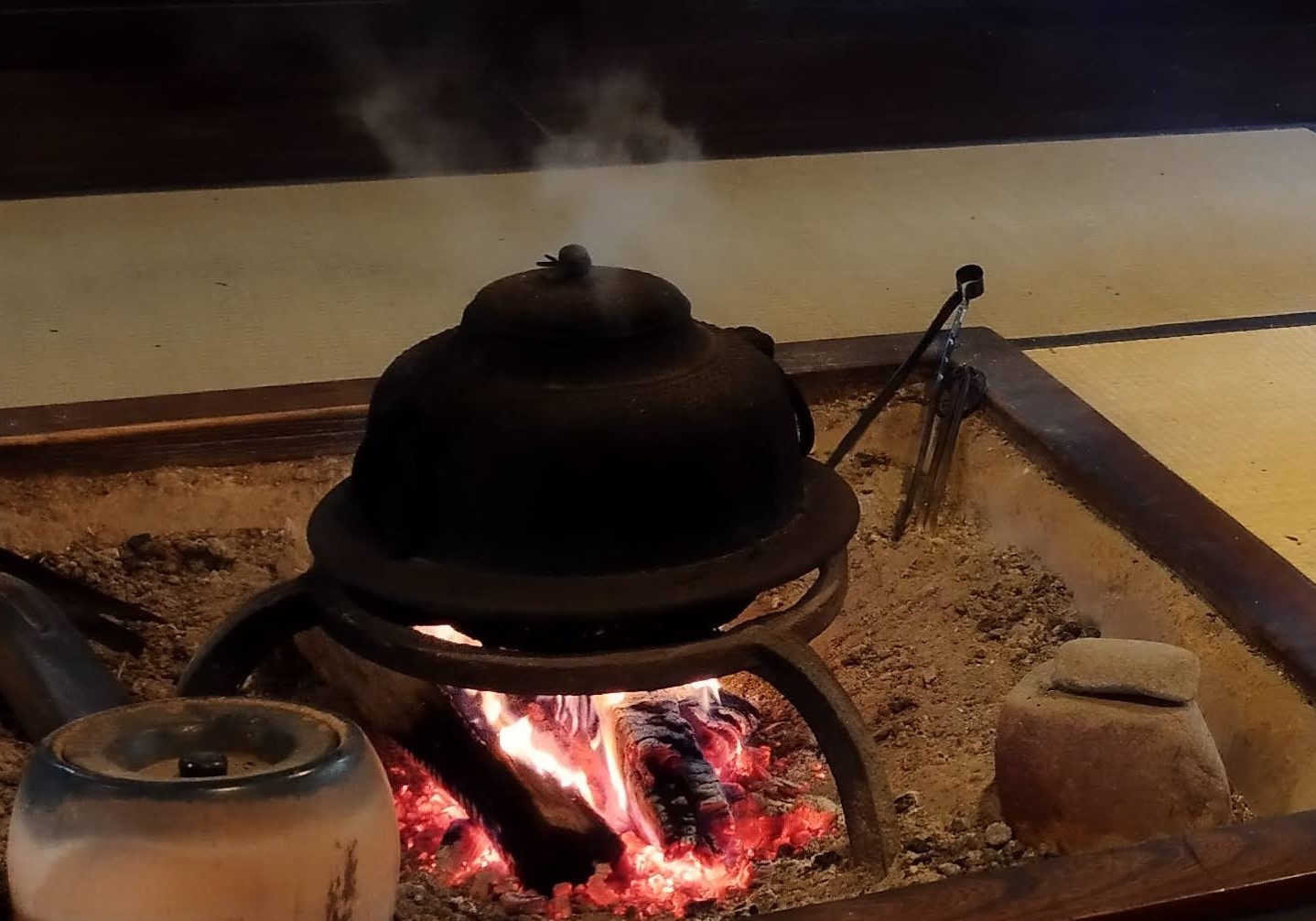本ブログは観光業、企業接待、留学生対応等で英語案内が必要ながら、多忙で準備に時間をかけられない方々の為にすぐに使える情報を分かりやすく解説しています。
今回は本編ブログ『世界遺産@白川郷わかりやすく解説』の《5.囲炉裏>5.2 インバウンドの視点:笑いも取れるかも?>Q1 ここで料理をするんですか?》のA級者用(日→英の対応が必要な方)向け演習《Dツール》です。
👉ショートカット&リンクについて!①最初に音声で学習されたい方はそのままお進み下さい。➁最初に原文を確認されたい方は【原文:英日】へ。③本編ブログを参照されたい方は『白川郷わかりやすく解説』へ。④音声ツールの概要を参照されたい方は『演習ツール』まで!
5.囲炉裏
”Sunken Hearth”
5.2 インバウンドの視点:笑いも取れるかも?説明例
Q1 ここで料理をするんですか?
“Do people cook here?”
Dツール:”日⇒英”演習簡易ツール
本ブログ同様、全15文は前半の真面目パート(1-9)と後半のおふざけパート(10-15)の2ファイル構成になっています。また日本語だけ演習向けに(不自然にならない範囲で日英の語順を合わせる様に)編集しています。
D1:日英確認用:『日本語』”英語”対訳
👉文単位で日本語の後に英訳が續きますので、内容の確認ができます。
D2:口頭即訳用:『日本語』のみ(ポーズ間に英訳)
👉各日本語文の後はポーズになっていますので、その間に英訳できます。
D3:リピーティング用:”英語”のみ(ポーズ無し)
👉英語音声のみが(ポーズなく)続きますので復唱ができます。
D4:内容チェック用:”英語”のみ(低速版:or同通演習用)
👉英語音声(ポーズなし)を低速版で復唱or同時通訳の演習ができます。速さはいつも通り、約120wpm(約85%低速版)です。
【原文:日英】
《日本語》
- はい、鍋を火にかけて料理しましたが、灯りの役目も果たしまして、電気ができる前の、ろうそくしかなかった時だったんです。
- でもそれら以外にも囲炉裏はとても重要な働きをしていまして、建物の耐久性を高めていたんです。
- この火から出る熱と煙は天井の隙間から抜けて、上階の床と茅葺き屋根を通って行きます。
- その燻蒸で有害な虫や木材の腐りで建物がダメージを受けることを防いだのです。
- それで、この囲炉裏の火のメリットを最大限に活用する為に燃やされ続けましたが、それにより囲炉裏は想定外の意味で大きな効果を上げていたかもしれません。
- 村人は外で長時間、雪降る中、仕事をしなければならず、白川郷の極寒に耐えていました。
- 彼らはめげそうになったり泣きそうになったかもしれませんね、厳しい気候での辛い作業に。
- でも、彼らがこの辛さにもめげず辛抱できたのは、分かってたんですね、囲炉裏の火は常時燃えていて、家に帰れば、温かく自分を迎えてくれるって。
- この火は建物の耐久性を高めるだけでなく、人の心の耐性も強化してくれて、それが白川郷が名現代まで耐えられた理由かもしれませんね。
- 白川郷の人々が究極の火のプロと思えるかもしれないのは、何世紀も祖先が火を使った試行錯誤のお陰ですね。
- 仏教では不和で争いの絶えない家を「火宅」と言い、コントールの効かない混乱状態と人間の煩悩を象徴しています。
- ここの人々は囲炉裏の火のリスクとメリットを理解していて、日本の歴史で唯一の例かもしれませんね、火を見事にコントールしてきましたので。
- でも現代人はよく囲炉裏の良いイメージに憧れて、決まって自宅に導入してしまって後悔するんですね、面倒くさくなることもあって。
- なぜなら、我々が厳しい環境の為に本当に火を必要としないのであれば、囲炉裏を設置することは、ただの「火遊び」に等しいのかもしれません。
- この場合、感謝すべきは、最悪でも後悔位の軽い火傷で済んだということですかね。
《英訳例》
- Yes, the pots were used for cooking over the fire, but they also served as lights in the days before electricity, when only candles were available.
- But besides these uses, the hearth also performs other crucial functions that enhance the building’s durability.
- The heat and smoke from this fire escape through the cracks in the ceiling and eventually through the floor above and the thatched roof.
- This fumigation helps to prevent harmful insects and wood rot from damaging the building.
- Therefore, to maximize the benefits of this hearth fire, it was kept burning continuously, which may have enhanced its effectiveness in other unexpected ways.
- Villagers had to work outside for long hours in the snow, enduring the extreme cold of Shirakawa-go.
- They might have felt overwhelmed or on the verge of tears due to the hard work in such harsh weather.
- However, they could have persevered, despite their bitterness, knowing that the hearth fire would be burning constantly to warmly welcome them home.
- This fire not only increased the durability of the buildings but also strengthened the resilience of the people, which may be why Shirakawa-go has endured to the present day.
- People in Shirakawa-go might be considered ultimate fire experts, thanks to the centuries of trial and error experienced by their ancestors.
- In Buddhism, a house of discord and constant strife is referred to as a ‘house of fire,’ symbolizing uncontrollable chaos and human vexation.
- People here understand both the risks and benefits of fire, and it might be the only instance in Japanese history where fire has been so successfully controlled.
- However, modern people, who often admire the positive image of the hearth, usually find it regrettable to have introduced one into their homes, as it can cause significant burdens.
- This is because, if we don’t actually need a fire for harsh conditions, introducing an irori might be equivalent to ‘playing with fire.’
- In that case, we should be thankful that the worst outcome was merely a minor burn from our little regret.
御礼&後書き
お忙しい中、今回も最後までご覧いただき大変ありがとうございました。今回テーマ含め今後も定期的にブラッシュアップして参りますので、引き続きご参照のほど宜しくお願い致します。🔶Gold🔶v.3b.3c.1c


